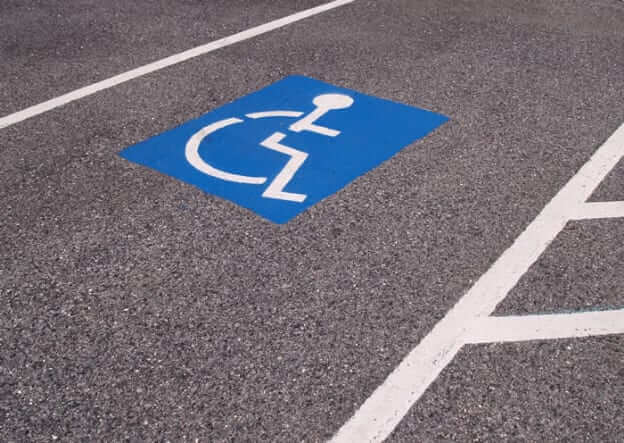The Americans with Disabilities Act isn’t just a good idea – it’s the law. Yet despite how important it is to ensure that people with disabilities are provided the accommodations they need to live and work, there are all too many places that have been lax in their ADA compliance – and a new crackdown on parking lot violations has sent business owners scrambling.
One of the most important facets of the ADA is ensuring parking lots have adequate handicapped access. Whether your organization is in charge of an office park, a commercial facility, or any other type of business, it’s your responsibility to ensure your parking lot complies with some very specific rules and guidelines for the number of handicapped-accessible parking spots. Not sure if your own parking lot will pass muster? Here’s what yours needs to be on the right side of the law.
Handicapped Parking Spaces Need to Be the Right Size
Putting a handful of parking spaces aside and painting them with contrasting color stripes isn’t enough to ensure you’re ADA compliant. In fact, there are some very exacting standards that you’ll have to adhere to when it comes to the size and shape of your handicapped-accessible spots, the access aisles that accompany some of these spots, and any handicapped parking signs that go along with these spots.
First, the ADA requires that any signage, either on a pole or mounted on the side of a building, need to be set at a minimum height of 60 inches (five feet). Additionally, the handicapped-accessible parking spaces themselves must also be a specific minimum width; spaces designed to accommodate cars must be a minimum of 96 inches wide. Meanwhile, van-accessible spaces need to be 132 inches wide – and they need to be accompanied by an access aisle that’s at least 60 inches wide as well. However, in some jurisdictions, these access aisles minimums are extended to 96 inches as well.
You Better Have the Right Number of Spaces, Too
As if ADA parking rules weren’t exacting enough when it comes to their size and dimensions, there’s also another important facet you’ll have to consider: the ratio of standard parking spaces to handicapped-accessible ones you have in your parking lot. An example of this is how for every six handicapped parking spots you have one of them must be a van-accessible spot.
However, the total number of spots you need is dependent on your parking lot’s overall capacity. For instance, for every 25 parking spots you have (up to 4 out of 100 spots in total), one of those must provide handicapped access. Then, 101 to 150-spot lots require 5 total handicapped spots, 160 through 200-spot lots require accessibility for 6 handicapped drivers, and lots that have 201-300 spots require 7 handicapped-accessible spots. This pattern continues to increase by 1 handicapped spot per 100 standard spots for lots with 500-car capacities or less.
The rules change once your lot exceeds 500 parking spots. From 501 to 1000 spots, handicapped parking spots must make up 2% of the total. For lots with a capacity higher than 1001 vehicles, the rule is 20 spots plus one for every additional 100 vehicles.
But Wait, There’s More!
That covers the majority of the rules for handicapped parking under the ADA. There are other parking lot regulations that you’ll have to follow, of course. These rules are largely concerned with the steepness of any ramps used and the grade of the parking lot itself, and it’s best to contact an ADA compliance expert to ensure the rest of your parking lot is in line with this federal law. An over-abundance of caution, in this case, is a good idea – you don’t want to be caught with your pants down when it comes to the ADA!

